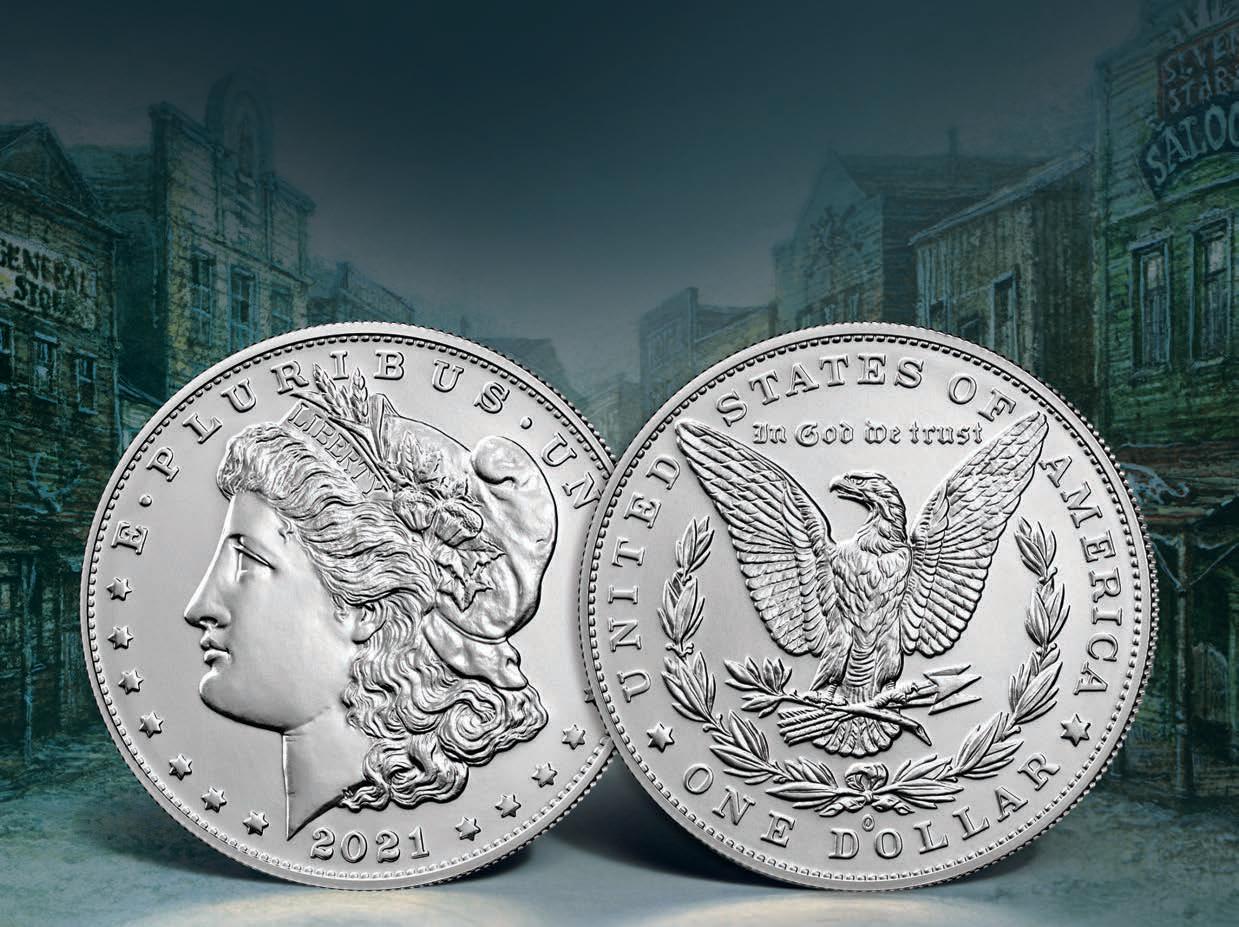
First struck in 1878, the Morgan Silver Dollar arose during a turning point in American history. After the Coinage Act of 1873, which had momentarily stopped silver dollar output, the finding of large silver discoveries in Nevada’s Comstock Lode attracted fresh interest in silver coins. Congress responded by passing the Bland-Allison Act in 1878, requiring the U.S. Treasury to buy and strike coins in great volume from silver. Designed by George T. Morgan, a U.S. Mint assistant engraver, the outcome was the Morgan Silver Dollar. This coin swiftly came to represent the industrial development and economic might of the country, and today, collectors and investors seek Morgan Silver Dollars for sale as prized pieces of American numismatic history.
An Interpretive Mirror of Industry and Economic Development
In the United States, late 19th century saw amazing economic growth. Connecting cities and enabling trade, railroads crisscrossed the country The financial industry grew while factories turned out items at a never-seen rate. As a physical symbol of American wealth, the Morgan Silver Dollar captured this expansion. Widespread circulation of the coin strengthened economic confidence by offering both a useful means of trade and a store of value for companies and people equally.
Design symbolism pays tribute to liberty and strength
The design of the Morgan Silver Dollar captured American people’s values. Lady Liberty, shown with a Phrygian headdress made of cotton and wheat—symbols of agricultural plenty—was on the reverse. This portrayal underlined the relevance of the agricultural and industrial sectors for the national economy. The reverse presented a strong eagle grasping arrows and an olive branch, indicating both military preparation and the search of peace. The minute elements of the coin’s design caught the feeling of a country ready for world impact.
The Part Silver Plays in American Currency
Over the 19th and early 20th centuries, silver was very vital in the American financial system. The Bland-Allison Act and later the Sherman Silver Purchase Act of 1890 raised government silver purchases, therefore directly influencing the manufacture of Morgan Dollars. These rules were meant to help the mining sector and guarantee a consistent value of money. But the growing argument between gold and silver standards finally resulted in the stop of Morgan Silver Dollar manufacture in 1904, only to be momentarily restored in 1921 before the Peace Dollar took front stage permanently.
An Investment Asset and Collectible
The Morgan Silver Dollar faded from use finally, but its memory persisted. Collectors and investors started seeing its historical and numistic significance in the middle of the 20th century. Special editions were produced by the U.S. Mint; numismatists searched for unique mint markings and well-preserved pieces. These coins are much sought after by collectors today and a consistent precious metal investment tool. In the numismatic world, their historical importance and silver content make them a valued item.
The Morgan Silver Dollar’s Continuating Legacy
Still one of the most honored coins in American history is the Morgan Silver Dollar. Its significance in trade, its complex architecture, and its link to a turning point in the history of the country help to define its enduring emblem of wealth. Whether prized for its beauty, gathered for its rarity, or kept as an investment, the Morgan Silver Dollar still symbolizes the fortitude and resiliency of the United States. Investing in silver through historic coins like the Morgan Silver Dollar remains a popular strategy for collectors and investors alike. The coin’s impact and value endure long into the modern age as the U.S. Mint honors its legacy with memorial releases.